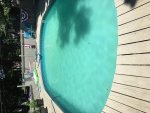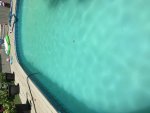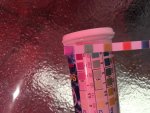Hi, I'm new to this forum, so still getting the hang of things. I have a 15,000 gallon above ground pool that has been fairly clear throughout the summer. I went out of town for a week or so and left the pool in the hands of my fiance. It was storming a lot last week, so I expected it to be a little green. But since then, the chlorine levels have been really high (She may have shocked it too much and added too much chlorine), and I cannot get the pool to clear up. My levels are below:
FC: 10
TC: 10
AK: 80
PH: 7.2
TH: 0-100
I know that I need to get my hardness up, but are there any other suggestions on lowering the chlorine level? I am backwashing and cleaning everyday, all the while continuing to add more fresh water. I've read about floccing, is this something that I should consider? Any advice would be great!
-Kevin
FC: 10
TC: 10
AK: 80
PH: 7.2
TH: 0-100
I know that I need to get my hardness up, but are there any other suggestions on lowering the chlorine level? I am backwashing and cleaning everyday, all the while continuing to add more fresh water. I've read about floccing, is this something that I should consider? Any advice would be great!
-Kevin





